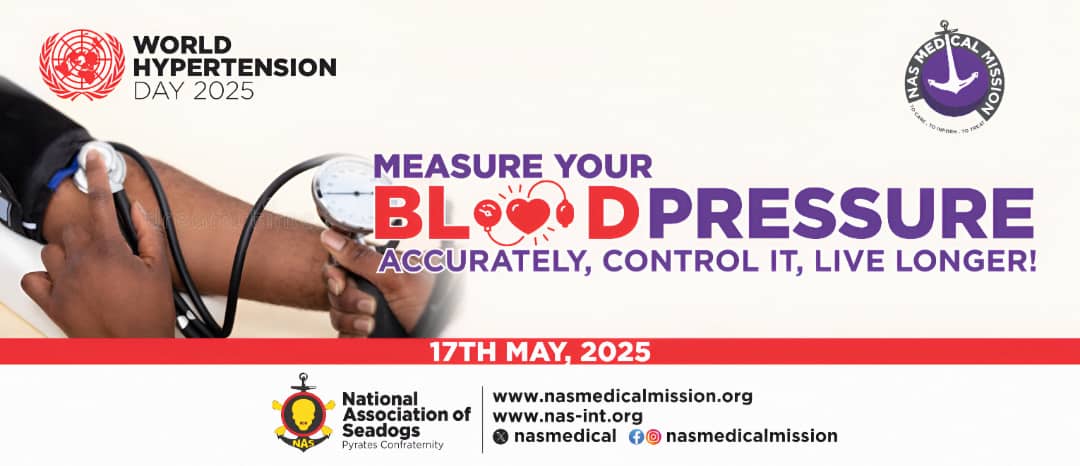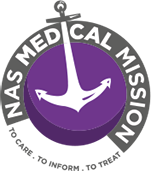
On this World Hypertension Day, the National Association of Seadogs (Pyrates Confraternity) joins the global community in raising awareness about hypertension – a condition often termed the “silent killer.”
In Nigeria, hypertension has emerged as a significant public health concern, with prevalence rates ranging from 22% to 44%, varying by region. Currently, hypertension prevalence in Nigeria has been on an upward trajectory over the past few decades. In 1995, the age-adjusted prevalence was estimated at 8.6%, representing approximately 4.3 million individuals aged 20 years and above. By 2020, this figure had surged to 32.5%, equating to about 27.5 million individuals. Despite this alarming increase, awareness, treatment, and control rates remain dismally low. Only 29% of hypertensive individuals are aware of their condition, 12% are receiving treatment, and a mere 2.8% have their blood pressure under control. It is notable that recent interventions have shown promise. The Hypertension Treatment in Nigeria (HTN) Programme, launched in 2020, implemented a multilevel care model across 60 primary healthcare centers. By December 2023, treatment and control rates had surpassed 90% and 50%, respectively, underscoring the program’s impact.
Understanding the factors contributing to the hypertension epidemic is crucial for effective intervention. The following are key contributors:
1. Urbanisation and Lifestyle Changes: Rapid Urbanisation has led to sedentary lifestyles, increased consumption of processed foods high in salt and unhealthy fats, and reduced physical activity.
2. Dietary Habits: The traditional Nigerian diet, rich in fruits and vegetables, has been increasingly replaced by processed foods and sugary beverages, contributing to obesity and hypertension.
3. Alcohol Consumption and Smoking: High rates of alcohol consumption and tobacco use are significant risk factors for hypertension.
4. Socioeconomic Factors: Limited access to healthcare, low health literacy, and economic constraints hinder early detection and management of hypertension.
5. Genetic Predisposition: Certain ethnic groups in Nigeria have a higher genetic susceptibility to hypertension, necessitating targeted interventions.
Addressing hypertension in Nigeria requires a multifaceted approach:
1. Public Health Education: Nationwide campaigns to raise awareness about hypertension, its risks, and prevention strategies are essential.
2. Lifestyle Modification Programmes: Community-based programmes promoting physical activity, healthy eating, and smoking cessation can significantly reduce hypertension prevalence.
3. Healthcare System Strengthening: Improving access to affordable healthcare services, training healthcare workers, and ensuring the availability of essential medications are critical steps.
4. Policy Implementation: Enacting and enforcing policies that regulate the marketing of unhealthy foods and beverages, as well as tobacco and alcohol products, can mitigate risk factors.
5. Research and Data Collection: Investing in research to understand hypertension patterns and evaluate intervention effectiveness will inform evidence-based policies.
The National Association of Seadogs (Pyrates Confraternity) calls upon all stakeholders—government agencies, healthcare providers, civil society, and individuals—to unite in the fight against hypertension. Through collective action, we can create a healthier future for all Nigerians. Hypertension poses a significant threat to Nigeria’s public health landscape. While recent programmes have demonstrated that progress is achievable, sustained efforts are necessary to curb this epidemic.
Chiazor Odoemene
Chief Medical Officer
